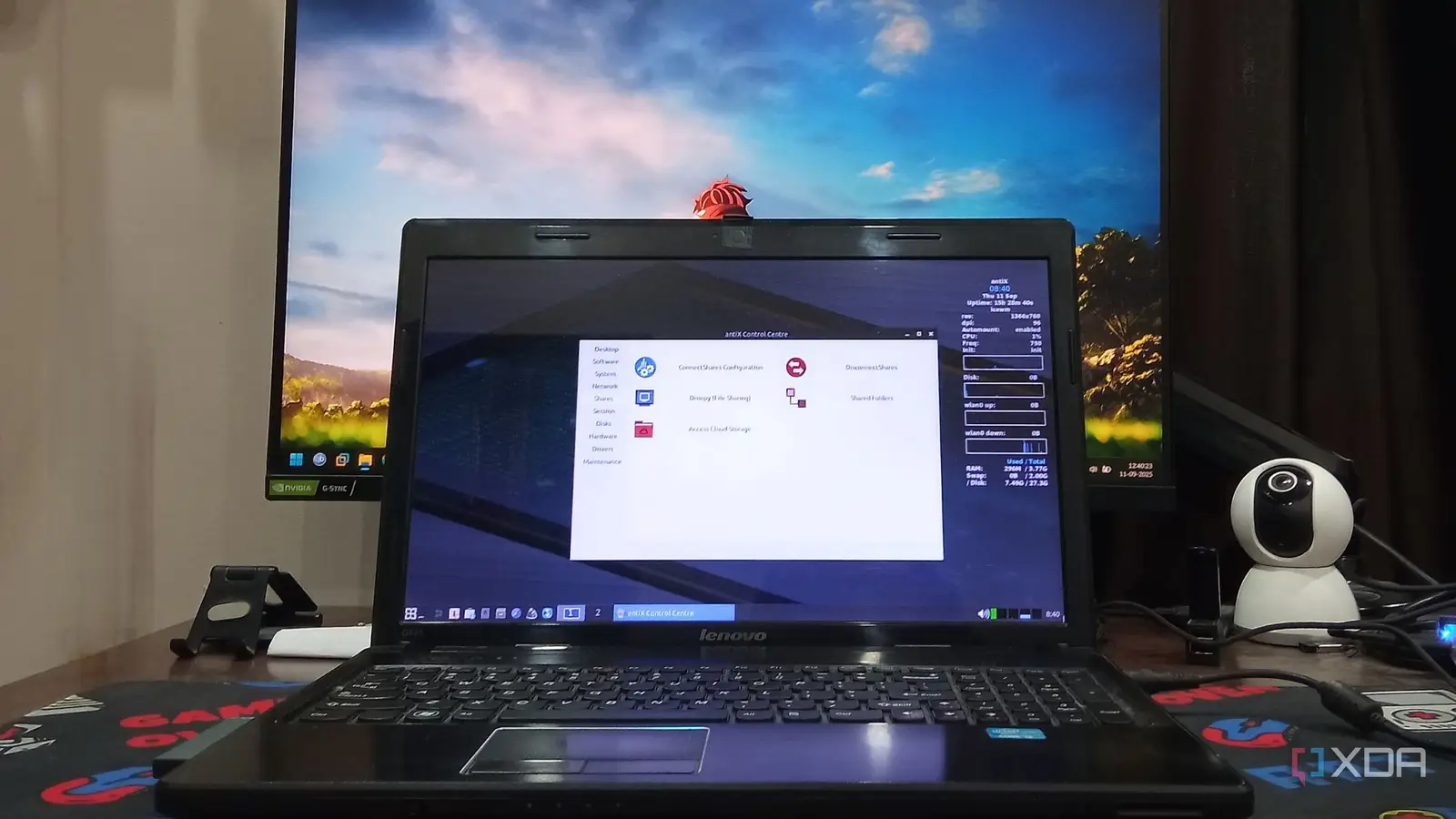
My old Lenovo laptop no longer supports Windows. The last OS that worked on it was Windows 7, and after that, every app, including modern browsers, stopped working due to the operating system being unsupported. The obvious choice was to install an operating system that runs without hiccups, given the laptop’s 2-core second-gen Intel i3 processor and 4GB DDR3 memory. I previously tried the Raspberry Pi Desktop OS, but it had a few flaws. It lacked a 64-bit version and was based on Debian 11, with no chance of future upgrades.
I found solace in antiX, a Linux distro specifically for old machines with a complete essential app suite and multiple ISO options. It was fairly simple to set up, and the laptop didn’t struggle with it at all. Let’s discuss how this distro hopping turned out for me and why antiX should be your next pick for reviving old laptops and workstations.
Why didn’t I use Ubuntu or another popular distro?
AntiX doesn’t try to be everything
Ubuntu is undoubtedly the most popular Linux distribution based on Debian, and it has been maintained and upgraded like a flagship operating system. It works well, looks good, and is in no way inferior to Windows or macOS today. That said, Ubuntu has transformed into a more demanding operating system in the last decade. I remember dual-booting Ubuntu on my main laptop and tying it into virtual machines with the least possible resources. It worked nicely with barely 1GB of memory and whatever CPU I had.
Today, Ubuntu’s latest edition demands a 4GB memory setup with 25GB storage space, and that’s a problem for non-upgradable PCs. However, antiX only asks for 512MiB of memory, but obviously, you need more to run apps. My encounter with Ubuntu on an old laptop wasn’t great, so switching to something less demanding like antiX seemed like a no-brainer.
AntiX setup
Nothing complex
The OS comes in multiple editions, and picking the one that fits your system’s hardware is crucial. I selected the antiX-full edition, essentially the complete OS experience they offer. An antiX-base edition skips the pre-installed apps, resulting in a lighter system.
The other two aren’t for the average audience like us and cater to users who know their way around the terminal and love building distros from scratch. Skip antiX-core and antiX-net editions if you prefer a GUI interface.
Download the ISO file from the official antiX downloads page and create a bootable USB drive. There are ample tools, but I prefer balenaEtcher for creating such drives. You can also build a Ventoy USB containing multiple operating systems that are ready to install on any system.
I booted up with the USB drive and chose the first option, antiXfull. It didn’t take much time to boot into a test desktop environment, a feature of most Linux installations. You get to test the OS’s appearance and features before installing it.
AntiX automatically launched the Wi-Fi connection page, and I connected to my home network, after which the installation window appeared. I selected my disk, wiped everything (made a backup beforehand), and then created user credentials. After 5 minutes, the installer prompted me to restart the PC to apply the changes and boot to the antiX desktop. It is a swift installation compared to Ubuntu, which takes 15-30 minutes.
The antiX OS experience
Not the prettiest, but functional
I wouldn’t expect antiX or any other old system-reviving operating system to look like Windows 11 or macOS 15. It’s designed to offer a GUI interface and run all the compatible apps while consuming as few system resources as possible. AntiX excels at this approach because it consumes under 500 MiB of memory and slightly over 7 GB of storage space after installation. So, it leaves plenty of room to install apps on your disk and free memory.
Ubuntu requires at least 1.2GiB to start with all the base processes and uses over 9GB of storage on a fresh installation, which could be a problem for an older system. The boot time was more than 2.5 minutes, while antiX loaded in less than 60 seconds.
AntiX has over 1700 pre-installed packages, a little high because it bundles essential OS tools like Backup and snapshots, a full-fledged settings app, mouse configuration tools, LibreOffice, image editors, multiple window managers, desktop widgets, and useful apps. Ubuntu looks extremely good GUI-wise, but lacks essential tools to back up your system or create a system image that you can use to recover your OS or reinstall.
It features a basic package manager, categorizes apps, and includes a search function, making it easy to install. If your system has a dedicated graphics card, you can install its drivers and then install KDE or XFCE to improve antiX’s appearance. There’s even an option to activate visual effects that add fade and transparency effects.
I ran Firefox, and the web browsing experience, including video playback, was smooth for the most part. Since it already bundles many useful applications, I don’t need to install a tool for a small job like making a bootable USB. This laptop is ready to serve as an alternate web browsing or light school/office work machine.
AntiX cares about old PCs
I’m surprised at how well antiX works on my old machine, and including so many useful utilities is surely a gesture that shows old PCs deserve respect. My laptop has a new purpose rather than collecting dust on a shelf, and it doesn’t stutter when running AntiX at all. There’s almost a GUI tool for everything, even to see system stats, so you don’t need to rewire your brain to use the terminal if you switch from Windows. Regular updates with the latest Debian are icing on the cake, which is a rarity with niche Ubuntu distros.



